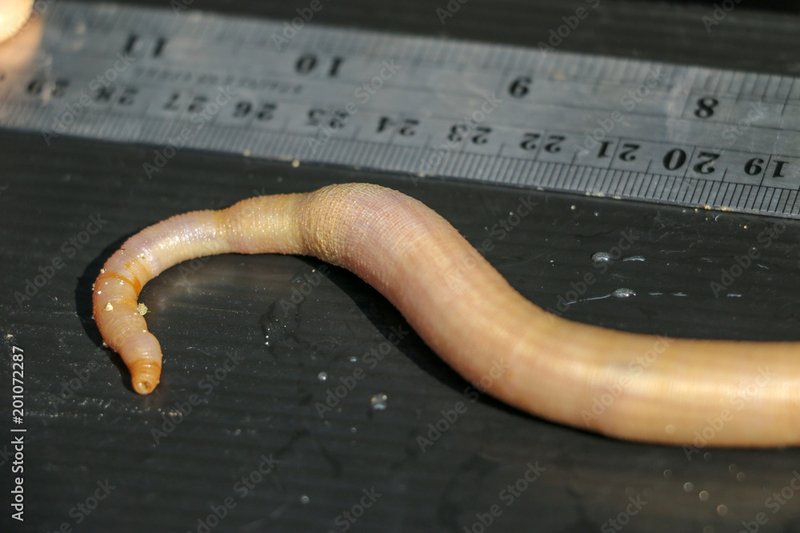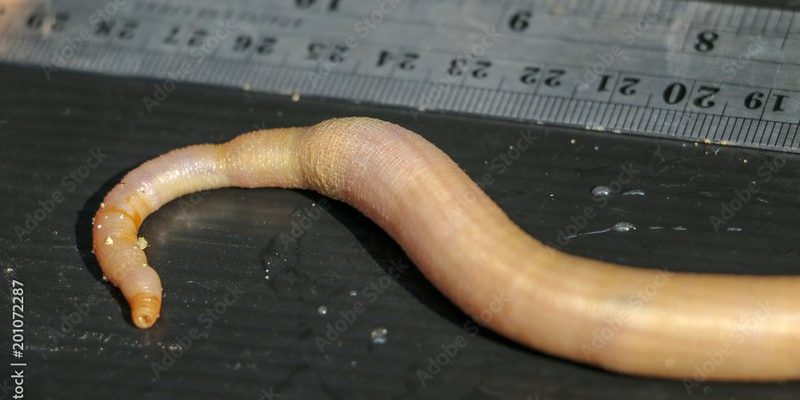
Let’s dive into the fascinating world of ribbon worms, also known as nemerteans. These elongated creatures don’t just break records—they also have some pretty unique features that make them stand out in the animal kingdom. With vibrant colors and a unique structure, ribbon worms are a marvel of nature. So, grab your coffee, and let’s explore what makes these creatures so special!
What Exactly Are Ribbon Worms?
Alright, before we get into the nitty-gritty of size records, let’s take a moment to understand what ribbon worms really are. They belong to a group of animals called nemerteans. These worms are soft-bodied and often brightly colored. You might find them in oceans, brackish waters, or even in damp soil.
Ribbon worms have a distinct long and flat body, which is where they get their name. Think of a brightly colored ribbon flowing gracefully through the water. They can vary in size, but some species can reach astonishing lengths, stretching several meters. Here’s the kicker: they usually aren’t very thick. It’s like seeing a long spaghetti noodle—hardly anything compared to its impressive length!
Not only are they known for their length, but ribbon worms also have an interesting method of movement. They can glide through water using a slimy layer, similar to how a snail moves. This unique way of navigating their environment makes them fascinating creatures to observe.
The Record-Breaking Lengths
So, just how long can these ribbon worms get? The longest ribbon worm on record is the *Lineus longissimus*, which has been documented growing up to 30 meters (that’s about 98 feet!). Imagine a creature that could stretch longer than a blue whale!
This impressive length can make these worms both awe-inspiring and slightly intimidating. A real-life ribbon worm could be dramatically longer than anything else you’ve seen on land. It’s almost like nature decided to push the boundaries of what’s possible in the animal kingdom.
What’s even cooler is that scientists are still discovering new species of ribbon worms, which means there might be even longer ones out there waiting to be found. If we keep exploring the oceans, who knows what records we’ll uncover?
Where Do Ribbon Worms Live?
You might be wondering where these incredible creatures call home. Ribbon worms are mostly found in marine environments. They thrive in sandy or muddy areas on the ocean floor, primarily living in coastal waters. Some species can even be found in rivers and ponds.
Their habitat choice is essential for their survival. The soft, muddy seabed provides the perfect environment for these long animals to hide from predators. Ribbon worms tend to burrow into the sand or mud, making it easier for them to catch their favorite snacks. Yes, they are predators themselves! They consume small invertebrates, using a unique hunting method to catch their dinner.
So, next time you’re at the beach or by a river, imagine these long, colorful creatures lurking just beneath the surface, potentially stretching out longer than any snake you’ve ever encountered.
Feeding Habits of Ribbon Worms
Now that we know where ribbon worms live, let’s talk about what they eat. Ribbon worms are considered predators in their ecosystems. They feed primarily on small invertebrates like crustaceans and polychaete worms.
One fascinating feature of ribbon worms is their proboscis. This is a long, tube-like structure they can extend out to capture prey. When a ribbon worm spots its meal, it shoots out its proboscis with incredible speed, snagging its victim before it knows what hit it. It’s like a mini vacuum cleaner, gobbling up food in a flash!
This method of feeding allows ribbon worms to be quite effective hunters. They can even inject toxins into their prey, making it easier to consume. Think of them as the ninjas of the underwater world—quick, stealthy, and efficient.
Unique Features and Adaptations
Ribbon worms are not just about their length; they also have unique features that help them survive. One remarkable aspect is their regenerative abilities. If they lose a part of their body, they can actually regenerate it over time. This ability helps them survive in a world where predators are always lurking.
In addition to that, many ribbon worms can change colors. This ability serves multiple purposes: it can help them camouflage from potential threats or communicate with each other. Imagine being able to blend into your surroundings quickly; that’s like having a built-in invisibility cloak!
Their bodies are also flexible, allowing them to navigate through tight spaces in their habitat. This adaptability is crucial for avoiding dangers and finding food. It’s just one more reason ribbon worms are so extraordinary.
The Role of Ribbon Worms in the Ecosystem
Ribbon worms may seem small, but they play a significant role in their ecosystems. By preying on smaller invertebrates, they help maintain the balance of marine life. If ribbon worms thrive, it often indicates a healthy environment since they rely on various species to survive.
Additionally, as predators, they also serve as a food source for larger animals. Birds and fish include ribbon worms in their diets, showcasing how interconnected life is in aquatic systems. Removing one species can have a ripple effect, impacting everything else. So, even though these long animals might go unnoticed, they contribute to the bigger picture of marine health.
It’s fascinating to think about how every creature, no matter how big or small, has its part to play. Ribbon worms might not be the stars of the show, but they’re crucial behind the scenes!
Fun Facts About Ribbon Worms
Let me share some fun tidbits about ribbon worms that you might not know! Here are a few interesting facts that make these creatures even more fascinating:
- Colors Galore: Ribbon worms come in various vibrant colors, from bright pink to soft green. Their colors can change depending on their environment.
- Ancient Beings: Ribbon worms have been around for millions of years, making them one of the oldest living organisms on Earth!
- Record Breakers: As mentioned earlier, the *Lineus longissimus* holds the title for the longest ribbon worm, measuring up to a staggering 30 meters.
- Predatory Skills: They can catch prey that is significantly bigger than themselves, showcasing their adaptability and hunting skills.
These facts not only highlight the unique characteristics of ribbon worms but also spark curiosity. Imagine learning about these unseen creatures while swimming at the beach!
Why Ribbon Worms Matter
So, you might be asking yourself: why do ribbon worms matter? Understanding these creatures helps us grasp how ecosystems function. By studying ribbon worms, scientists can gain insights into biodiversity and the health of marine environments.
Moreover, ribbon worms can serve as indicators of environmental changes. If their populations decline, it could suggest issues in their habitat, such as pollution or climate change. Keeping tabs on these creatures allows us to gauge the overall health of oceans and ecosystems.
In a world where environmental concerns are growing, every little piece of knowledge about organisms like ribbon worms can be invaluable. They remind us that even the smallest beings can have significant impacts.
In closing, ribbon worms may not be the most popular or well-known members of the animal kingdom, but their extraordinary lengths and unique characteristics make them worthy of our attention. They are true record-breakers, showcasing the diversity and wonder of life on Earth. So, next time you hear about the longest animals, think of those incredible ribbon worms stretching through the depths of our oceans.

